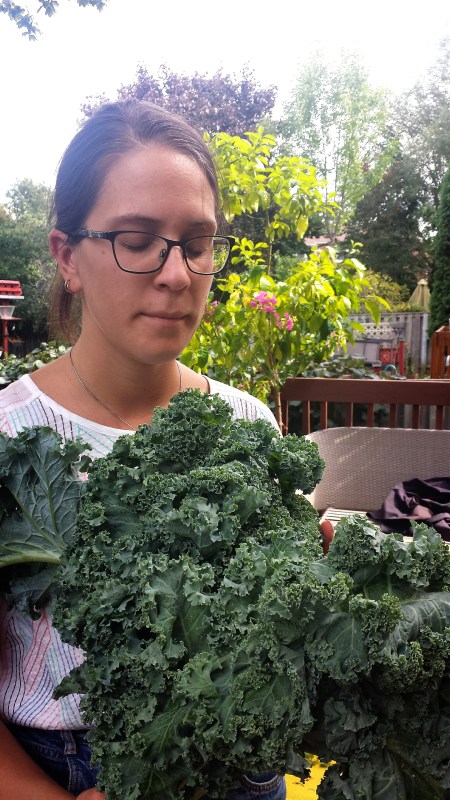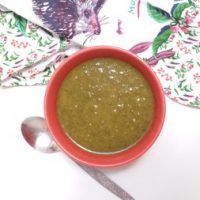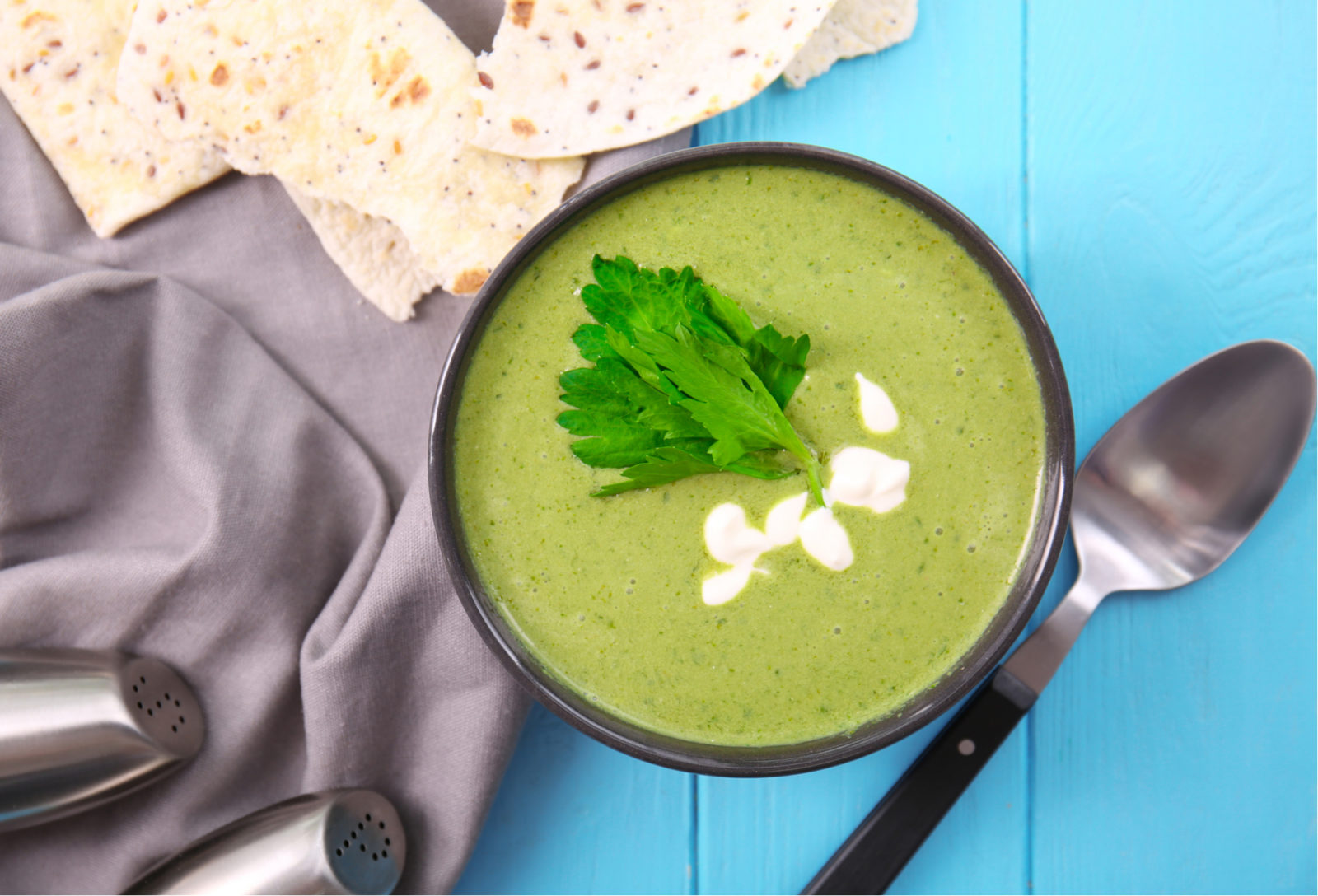This weekend on my magical farmers market venture I came across this bountiful, beautiful bunch of kale. I was conflicted about what to do with it, smoothie, soup or chips. So I made them all! The soup turned out super delicious and now I want to share this delicious kale soup recipe with you! This kale soup is amazingly easy to make to and so beneficial for the body and the digestive system. I find the soup is one of the best ways to get a whole bunch of vegetables into the diet, all combined together and deliciously creamy its hard not the grab seconds.

Kale when fully grown is coarse and strongly flavored (which may account for that zing). When picked young the flavor is not as intense and the leaves are slightly more tender, making them great for salad (make sure to massage the leaves to soften them up a bit more and be wary of the goitrogens in them if you have any issues with your thyroid). Depending on the season and the quality of the soil the nutrients within in kale and its flavor and texture will differ. It is most nutritious when grown during cooler months and in soil that requires a bit tough – the plant may have to work harder but it also reaps the benefits of being better for you and tasting yummier too!!
- Kale was the food of common people in the Middle Ages in Europe.
- Kale is derived from the Greek word kaulos, which means steam.
- High in fiber (great aid to lower cholesterol and aid in digestion)
- It is an incredibly high source of Vitamin K, A, C, manganese and copper
- A very good source of vitamin B6 & B2, Calcium, Potassium and Vitamin E.
- sulforaphane found in kale has been shown to increase the body’s detoxification enzymes — which may possibly aid in cancer treatment
- incredibly high in carotenoids – specifically lutein and zeaxanthin. Dietary Carotenoids are found to fight against disease – primarily cancer and disease (example – cataracts). Carotenoids also aid in filtering out ultraviolet light and protecting the eye against excessive exposure to it.
- strengthens the immune system – high antioxidant count and vitamin C
- makes the body more alkaline – thus aiding in reducing inflammation throughout the body and bones.

Zingy Kale Soup
Ingredients
- 4 -5 cups bone broth or vegetable broth
- 4 cups kale
- 1 large sweet potato
- 2-3 medium carrots
- 1 medium – large onion diced
- 2-3 tbsp olive oil
- 2 stalks celery
- 1 small or 1/2 a medium or large piece of parsley root
- 1-2 cloves garlic minced
- Himalayan salt to taste
- pepper to taste
Instructions
- In a large pot add oil and turn burner onto high /high to medium heat. Add the onions and a sprinkle of Himalayan salt. Cook onions until translucent on medium heat.
- Add stock to the pot and bring the stock to a boil.
- Cut all the remaining vegetables (except kale and garlic) into chunks and add them to the stock. Cook on medium heat until the vegetables are tender.
- Mince the garlic and let it sit for about 10 minutes so that the enzymes in the garlic can activate
- Once the vegetables are tender add the kale and the garlic. Cook until the stems of the kale are tender
- Let the kale soup cool a little and puree soup until it is smooth with no big chunks.
- Enjoy!!!
Nutrition
Sources
Davidson, A., & Vannithone, S. (1999). The Oxford companion to food. Oxford: Oxford University Press.
Johnson, E. J. (2002). The role of Carotenoids in human health. Nutrition in Clinical Care, 5(2), 56–65. doi:10.1046/j.1523-5408.2002.00004.x
Mateljan, G. (2015). World’s healthiest foods, 2nd edition: The force for change to health-promoting foods and new nutrient-rich cooking. United States: G M F Pub.
Amanda Filipowicz is a certified nutritional practitioner (CNP) with a bachelor in environmental studies (BES) from York University. She also has certification in clinical detoxification, prenatal and postnatal care as well as nutrition for mental health. She has been working as a nutritionist since 2013 and is a lifelong proponent of eating healthy.

